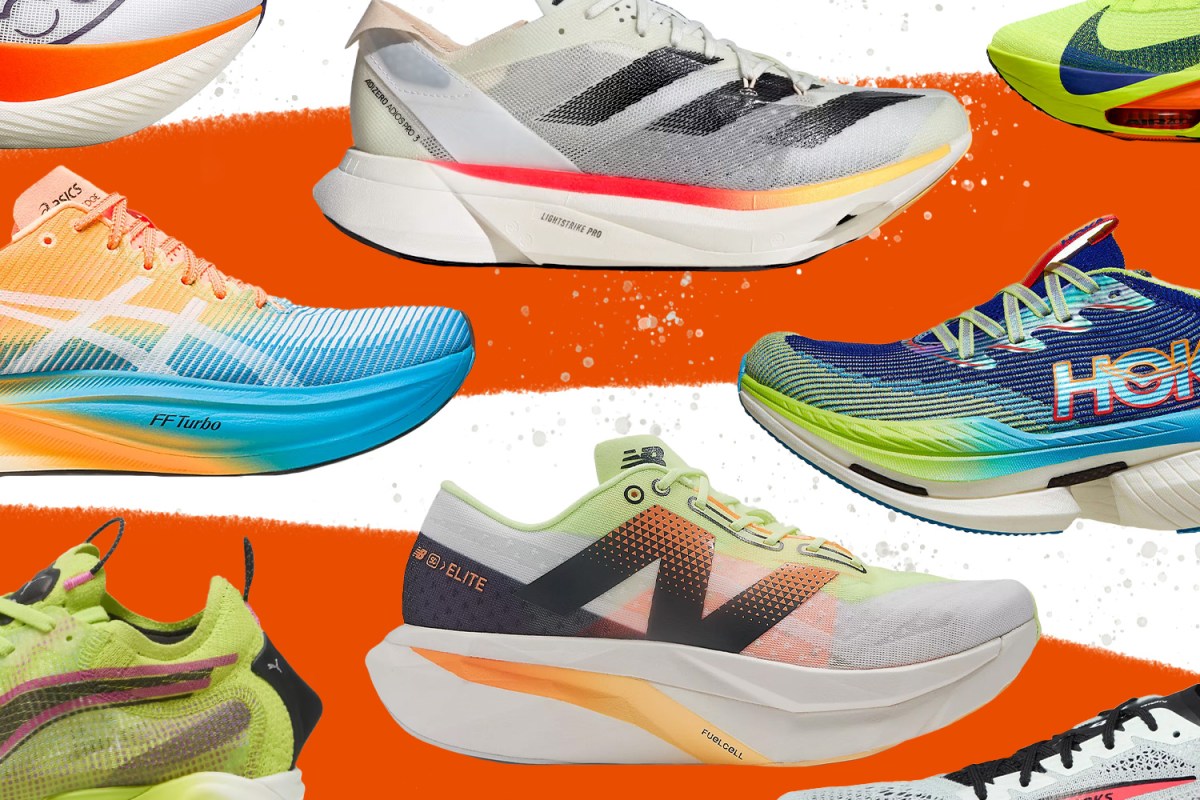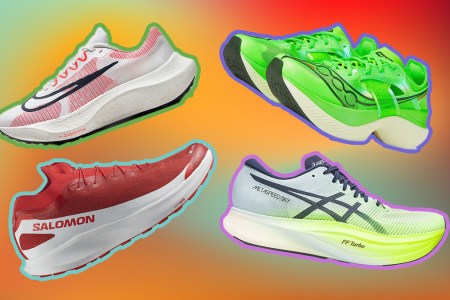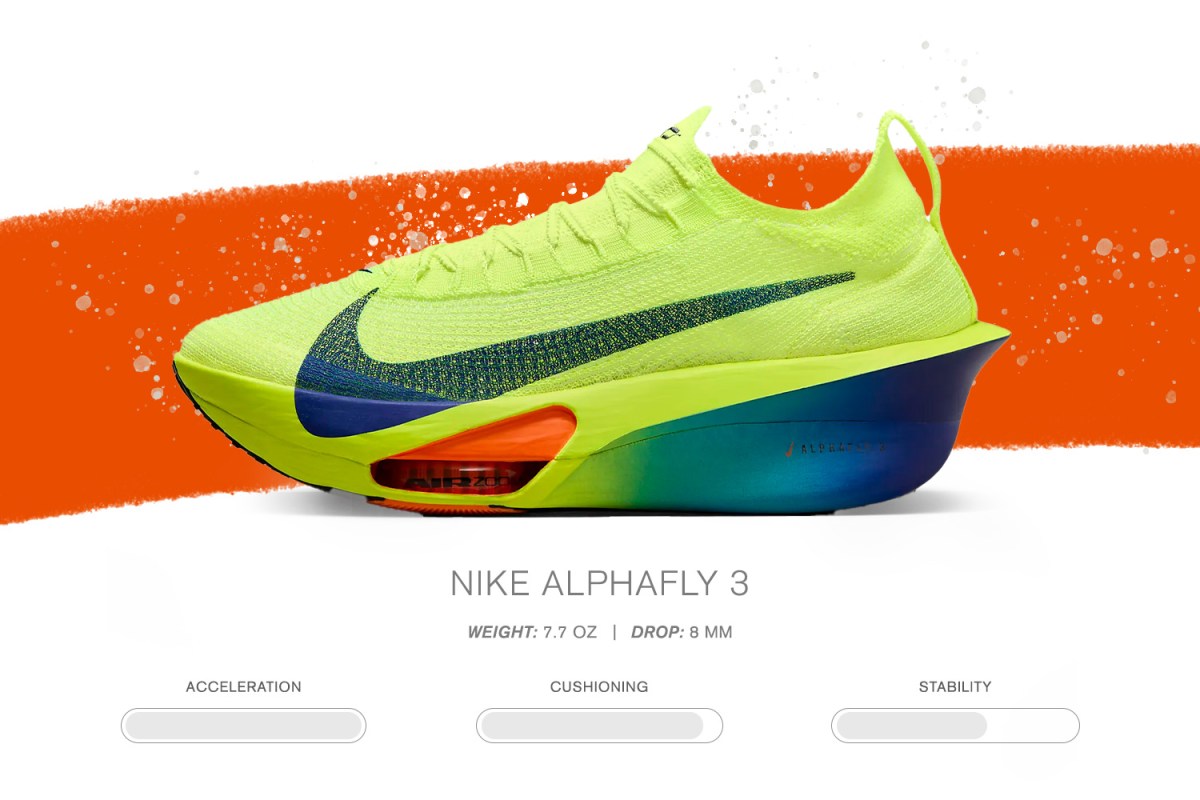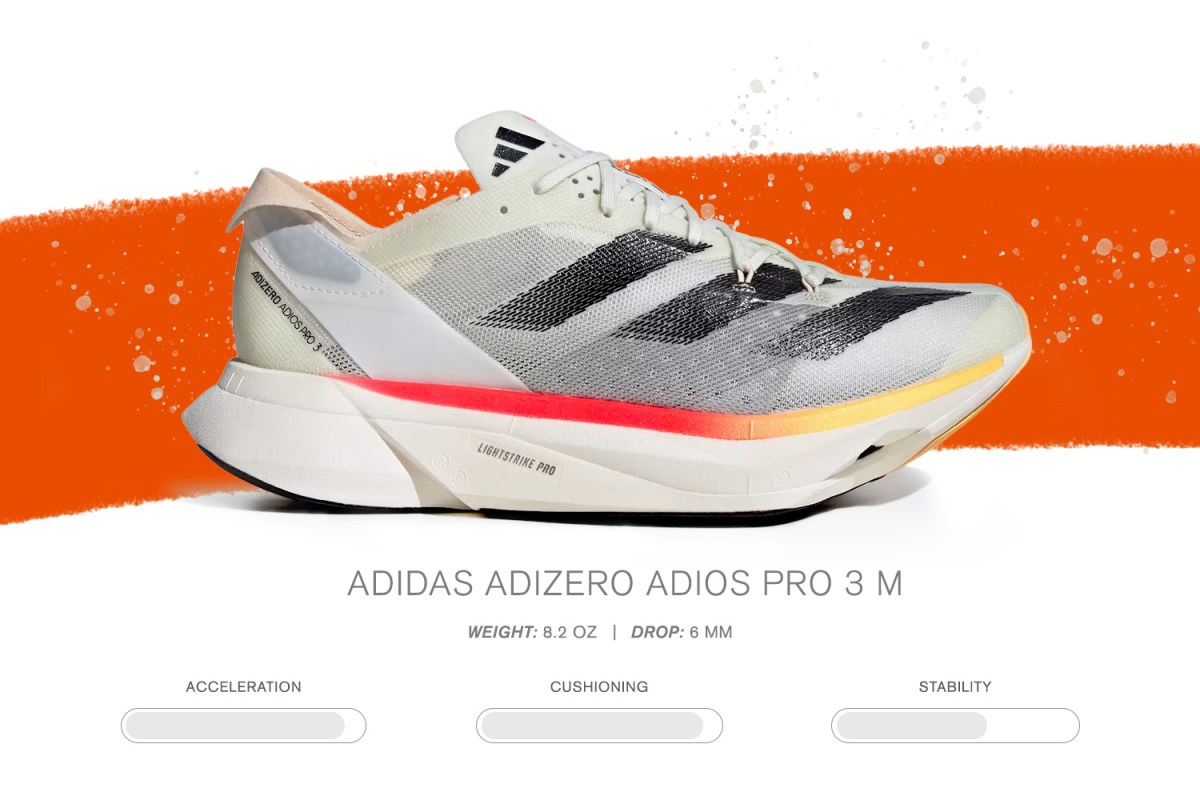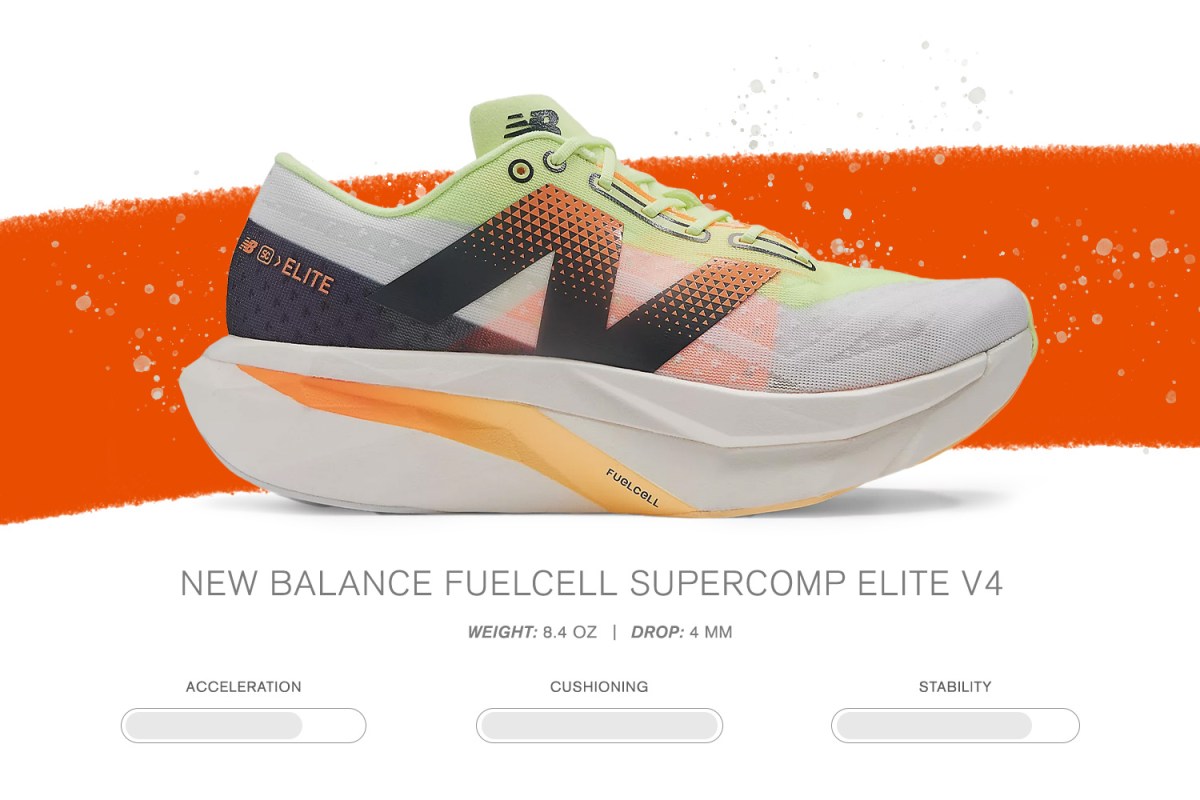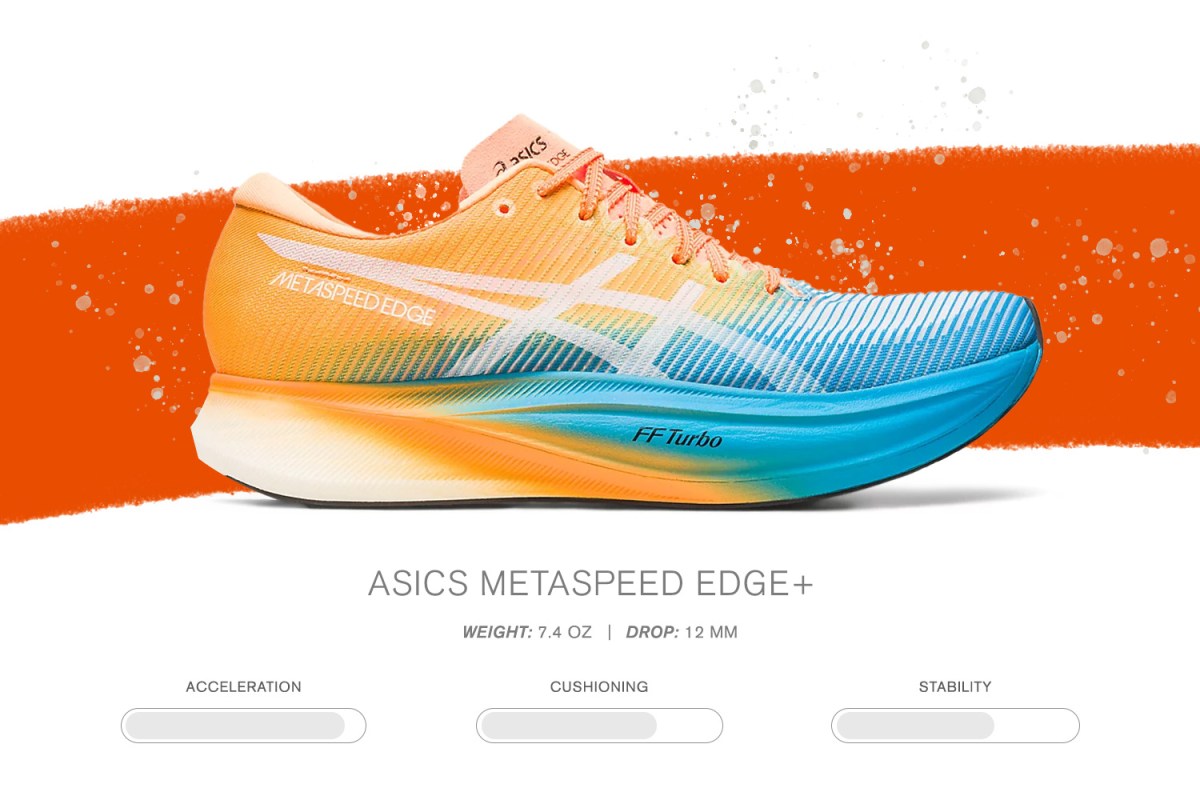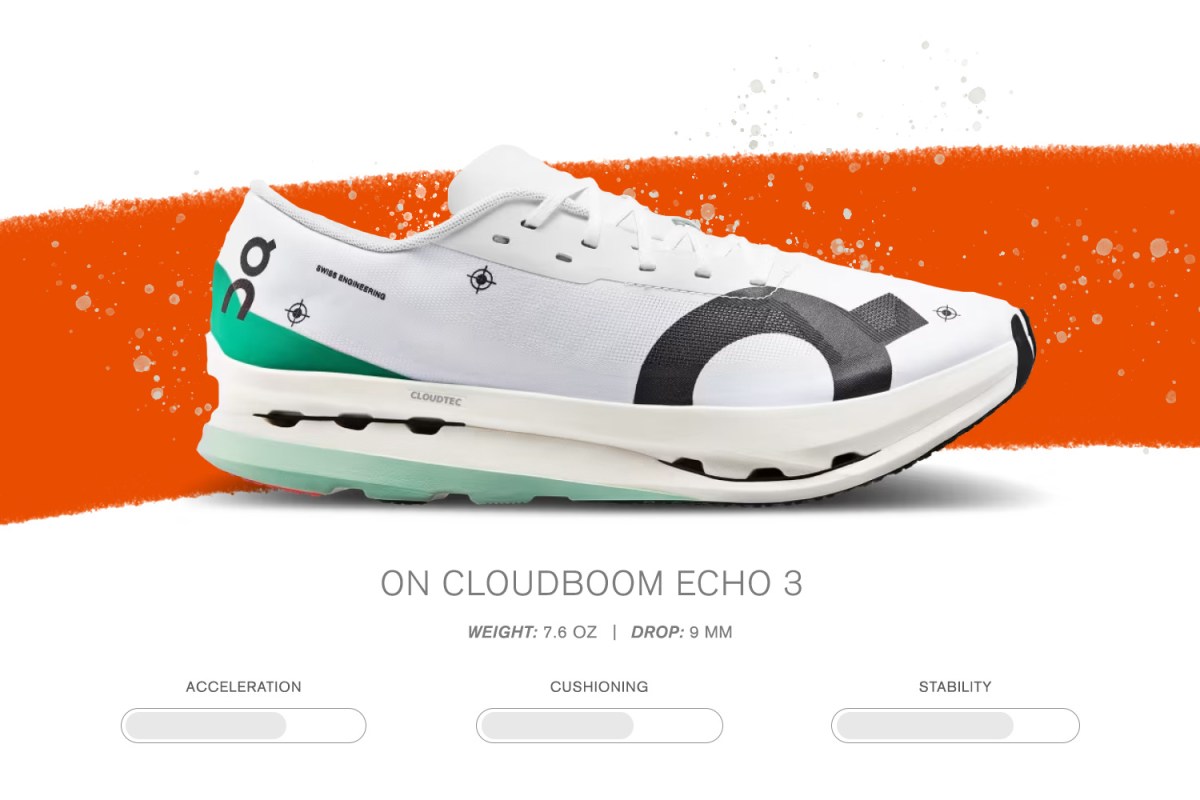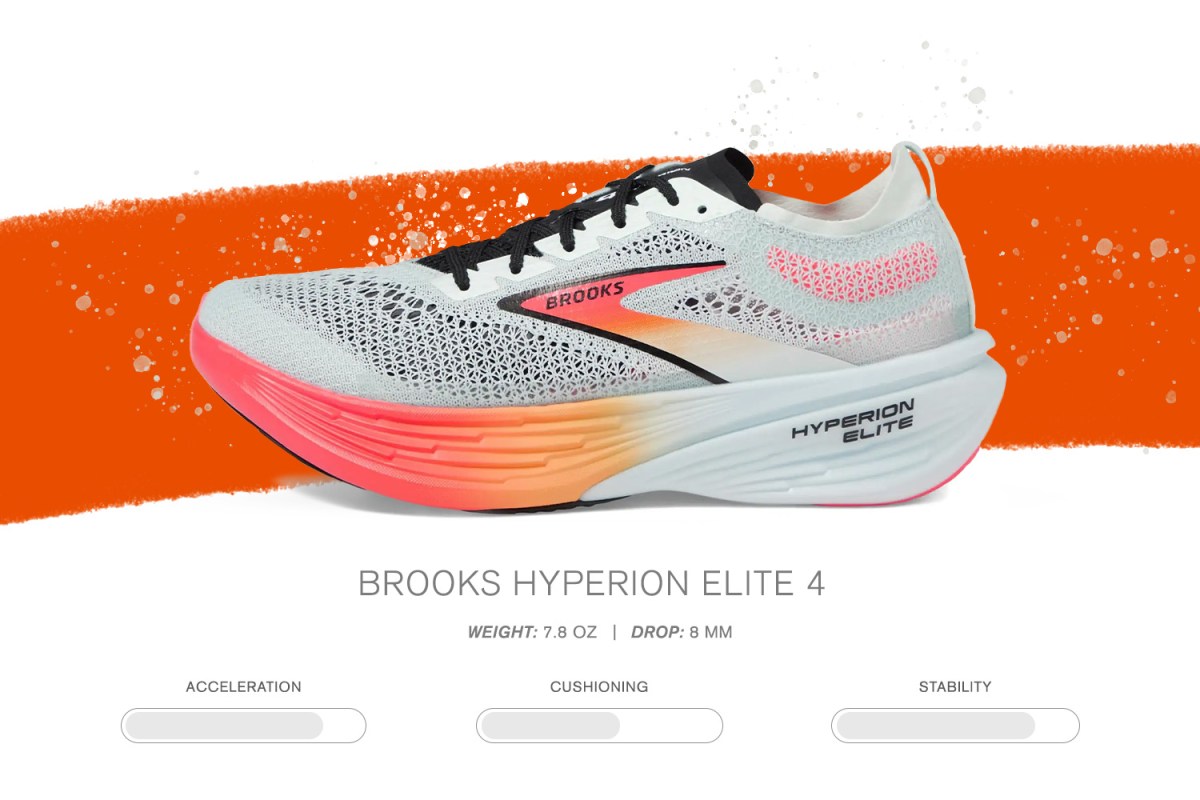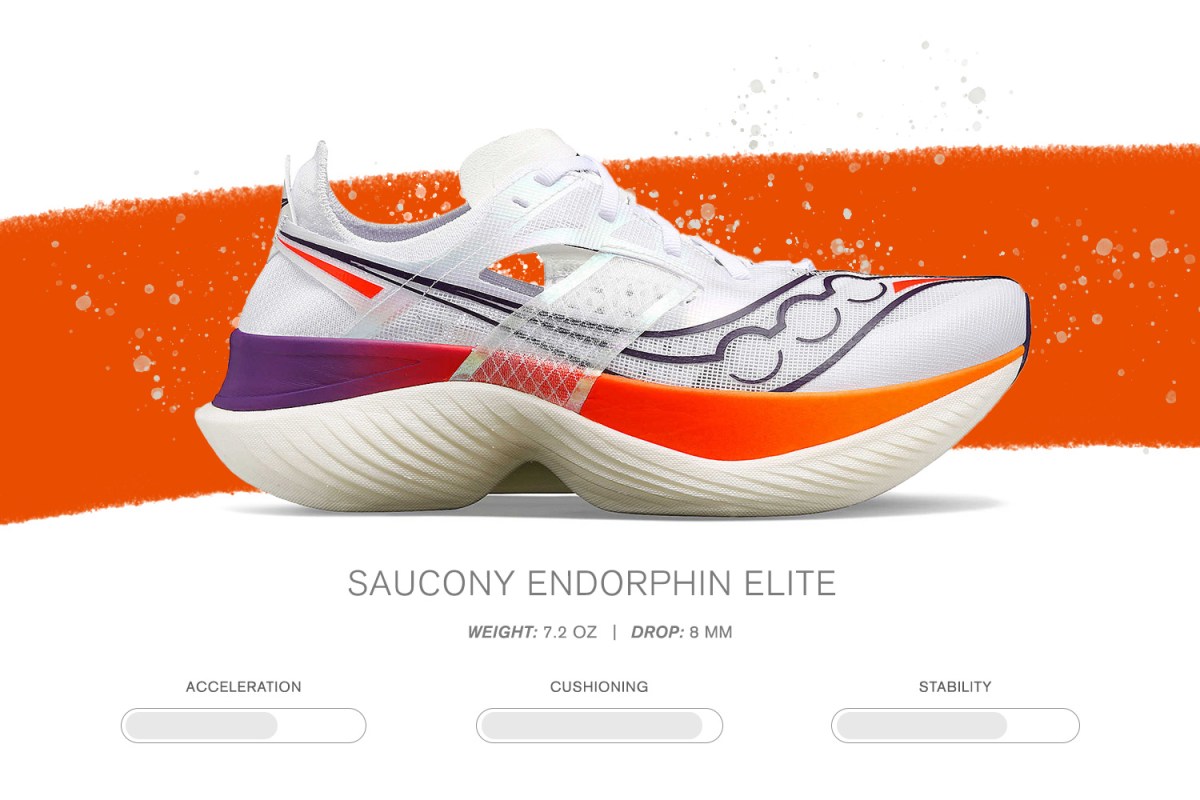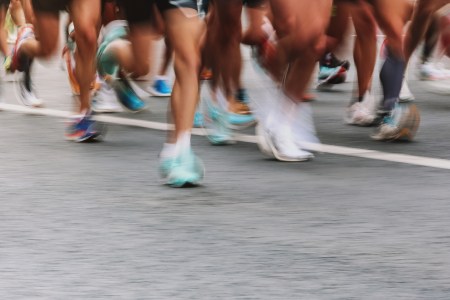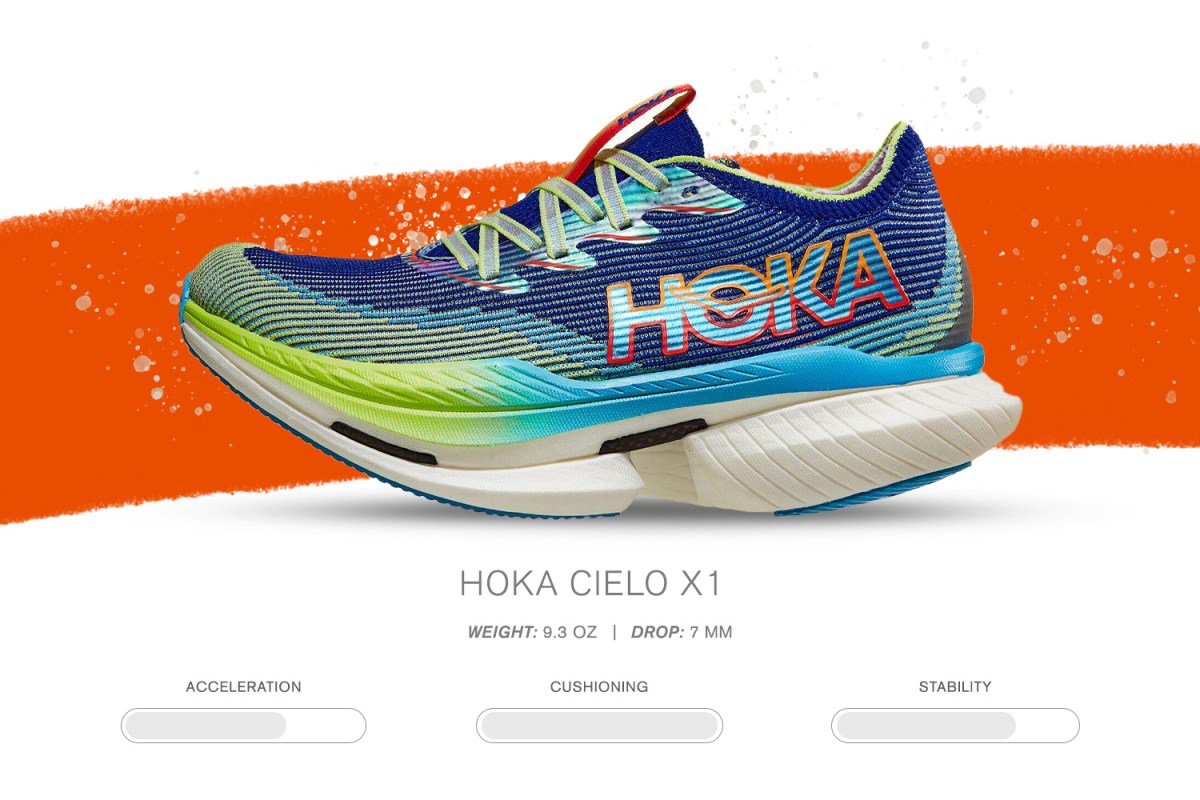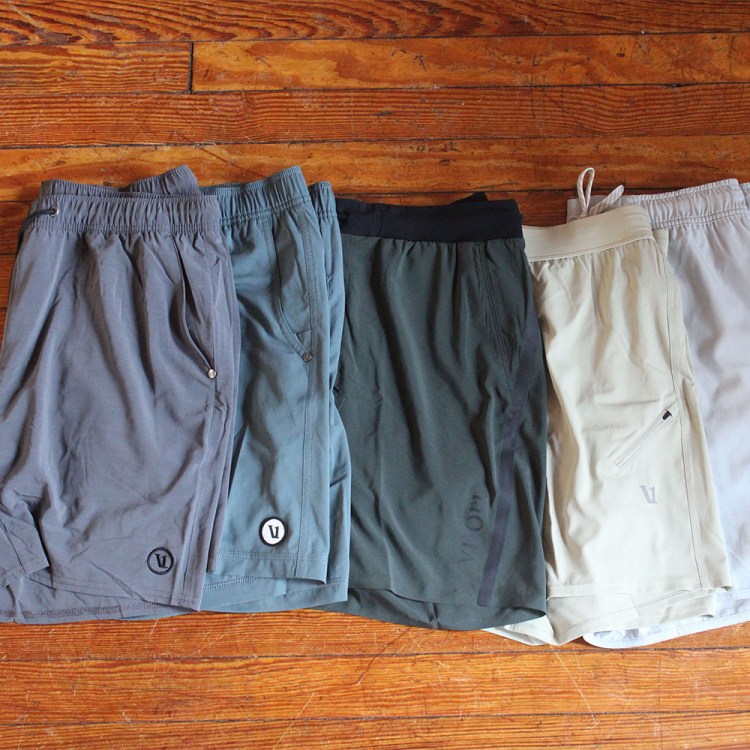Nota bene: All products in this article are independently selected and vetted by InsideHook editors. If you buy something, we may earn an affiliate commission.
Running shoes are everywhere. The market for performance sneakers has ballooned from humble waffle shoe origins to a 50 billion dollar industry, due in large part to an increased interest in the sport in recent years and an ever-expanding crop of offerings for the growing field of runners. (More than 50,000 people raced in this year’s New York Marathon, InsideHook included.)
Jump To
Among the hundreds of silos available today — injury-preventing support sneakers, cushy, foam-filled trainers and lightweight racers, from dozens of brand names (Nike, Hoka, On) you recognize — one category of running shoes stands out from the rest, both in fanfare and results: the super shoe.
The Globetrotting Guidebook: Our Most Memorable Runs Across the Planet
A powerhouse panel of pro runners, legendary coaches and race directors share the routes they’ll never forgetWhat Is a “Super Shoe”?
The rise of super shoes has been well-documented, a parallel force to running’s recent exponential growth. But what exactly makes these sneakers so spectacular? The term “super shoe” is a colloquial used to reference carbon-plated running shoes, a 2010s breakthrough in dynamic design formulated for optimal running economy via the increased energy return and forward momentum the ultra-light fiber plate and stacks of responsive foam promote. In layman’s terms, a sneaker fitted with new technology to maximize the speed and time at which you can run.
Given their propensity for lightning-fast times, these running shoes have become the de facto racing shoe for every distance from the mile to the marathon. Pro runners routinely wear the latest super shoe for all of the elite races, and with two majors in the Boston and London marathons on the horizon, it might be time to consider a pair for yourself.
The Best Running Shoes for Race Day and Speed Workouts
With their premium cushioning foams and lightweight, propulsive designs, racing shoes are built to help you set a new PRAre Super Shoes Worth It?
As the top-of-the-line product in the running world, super shoes command both a reverence and a price tag (many of these styles run upwards of $300) that may seem extreme. Do these carbon-plated sneakers actually make that much of a difference? In short, yes — while they won’t improve your aerobic base or correct your wonky form, the return from these trainers offers a marked decrease in overall race time for most runners.
The original super shoe, Nike’s Vaporfly 4%, was named for the purported four percent increase in running performance, and subsequent models helped break the seemingly impossible 2:00 barrier in the marathon. (The GOAT of marathon running helped, too.) In fact, the current era of super shoes has seen every major record from the 5,000m to marathon fall, in both the men’s and women’s fields.
To be clear, these racers are not standard trainers and are intended for race day efforts. Some reports even suggest detrimental effects when casually training in super shoes. But they included in the gear that pros and PR-seekers alike reach for when trying to nail a fast mile, or 26.2 of them. If you’re willing to splurge to reach your goals, they’re a worthy investment.
What to Consider When Picking a Super Shoe
Picking the right pair of ultra-fast racers is no walk in the park. With a variety of fits and forms available, it can be difficult to know what exactly to look for when picking the right pair for you. To that end, I’ve highlighted some areas to pay special attention to when selecting your next pair of super shoes.
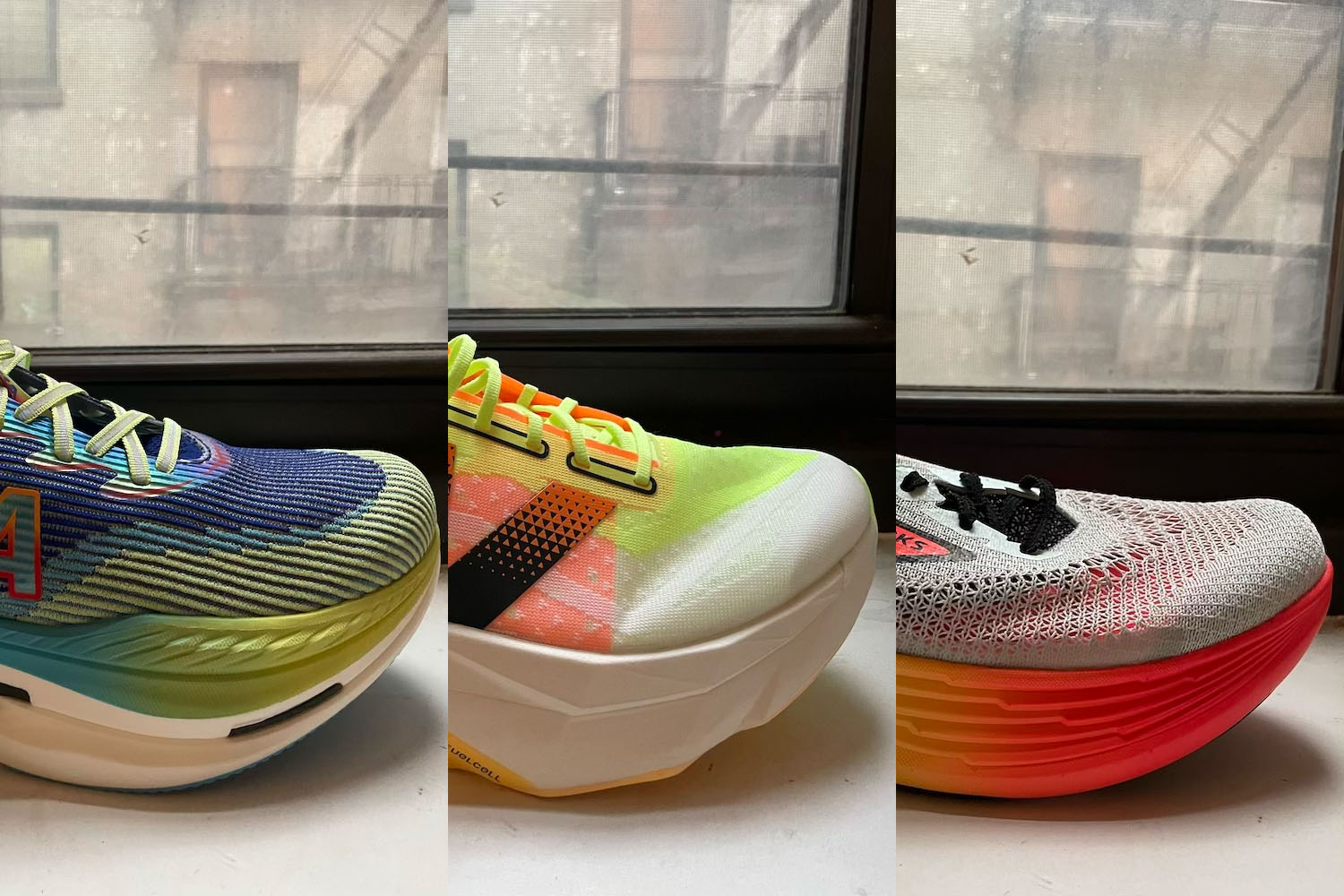
- Acceleration: Acceleration may sound fancy, but in essence, it simply boils down to how fast the shoe can go. A variety of factors influence the speed at which you’ll be able to run, including the weight, rocker shape and structural makeup of the shoe.
- Cushion: Super shoes are similar in that they all utilize some form of springy, feet-saving foam, typically condensed around the midfoot and forefoot, the natural strike areas when running at pace. The density, firmness and general amount all greatly vary, however, impacting what each step feels like underfoot.
- Stability: While most super shoes operate within a similar heel drop — the offset between a shoes heel and forefoot — the varieties of stack height and outsole size cause a wide range of stability levels. Super shoes are notorious for being more precarious than their everyday trainer cousins, a inevitability giving the typical surplus of foam and exaggerated rocker.
A quick note: given that they tend to sacrifice additional foot padding, outsole rubber and reinforced uppers for extra foam and reduced weight, super shoes are not known to be particularly durable. If you’re looking for a shoe to train fast paces in or an all-around shoe you can put 500+ miles into, the style may not be for you.
Which Super Shoe Is Right for You?
Given that there are now a variety of offerings currently floating around, I’ve taken it upon myself to test each and every one of the premier super shoes offered by the generally accepted top-running brands. (Typically, if a brand sponsors pro runners and supplies a super shoe, they qualify for this categorization.) To that end, I’ve procured and run in eight of the latest super shoes from Nike, Hoka, Adidas and more over the past month to see how they stack up. Find my conclusions below.
Pros
- This shoe is fast
- Daul Air Zoom units rocket forward with every step
- Continuous outsole update is a marked improvement on the Alphafly 2
Cons
- Upper is still not as durable as I’d like
- Cost-per-wear makes for a questionable investment
Who is this shoe for? The flashy speed demon with cash to burn.
Ideal racing distance: Mile to marathon.
Nike may be lagging behind the competition in sales this year, but their Alphafly 3 remains the undisputed king of super shoes. The current world record holder for the marathon and benchmark for running shoe performance, the Swoosh’s speediest sneaker relies on the same ZoomAir pods as its previous version, but a new upper and markedly improved continuous outsole offer vast increases the Alphafly’s comfort and stability. Running in the sneaker is like strapping a literally rocket to your foot, each step launching you forward. Despite that, they felt stable underfoot, and moved up and down the cadence gears with ease.
My one gripe with the sneakers, and one that I’ve had with every Nike super shoe, is the lack of durability from the silos. While they’re intended for races, I’ve literally ripped through previous iterations of the Alphafly at well under 200 miles, a travesty given their nearly $300 price tag. This Alphafly 3 seems slightly better, but I’m already seeing minor signs of wear after less than a month of training. However, f you want to pony up the funds (and mostly like set a PR) this is the only shoe for you.
Pros
- The complete package — fast, secure and comfortable across all distances
- Double layers of LIGHTSTRIKE PRO made for one of my favorite rides
- Continental rubber outsole seems particularly durable
Cons
- The heel apparatus rubbed a bit, especially through the first few runs
- One of the only shoes I had to “break in”
Who is this shoe for? The consistent runner who wants a smooth ride.
Ideal racing distance: Half marathon and up.
The Ying to Nike’s Yang, Adidas has struggled to compete in the super shoe space in the past, with legality snafus and subpar racers that don’t seem to compare to the likes of New Balance or Brooks, let alone their Beaverton-based rivals. That’s all changed with the introduction of the Adizero Adios Pro 3. The flagship racer is a revolution for a clearly besought German R&D team, packing all of the tech that makes Adidas’ tempo and everyday trainers so special into a shoe with some serious cushion and kick.
Where the Alphafly 3 is a rocket, the Adizero Adios Pro 3 is a well-oiled machine — not quite as propulsive, but with an incredibly smooth contact and transition thanks to the snappy carbon-infused ENERGYRODS 2.0 and dual-layer Ultralight LIGHTSTRIKE PRO. The motion of the shoe does feel slightly more unnatural than other trainers on this list, but after getting used to the sensation, every stride I take felt even, cushioned and comfortable, all at pace. Adidas has a gem on their hands.
Everything You Need If You’re Running a Marathon
All the gear and garb you’ll need to survive 26.2Pros
- Snappy yet forgiving PEBA foam FuelCell midsole
- Feel as fresh on mile ten as they do on mile one
Cons
- Tongue material feels flimsy and breakable
- Slightly bulbous, especially across the back of the shoe
Who is this shoe for? Any runner — newbie or elite — who wants that extra pep in their step.
Ideal racing distance: Half marathon, marathon, an extra speedy long run.
New Balance’s latest FuelCell model, the SuperComp Elite v4, is not one that I was expecting to love. I’ve had issues with New Balance in the past, particularly with the “snappiness” of the shoe, and was expecting more of the same. I am pleasantly pleased to report, however, that the FuelCell SuperComp Elite v4 cooks. It feels lighter than past versions and has a nice bounce off the pavement — this is thanks to the revamped carbon footplate — while maintaining that classic NB cushion. Even better, that rebound is literally built into the shoe thanks to the specially formulated PEBA foam FuelCell midsole (NB claims that the foam delivers a whopping 87% energy return, as compared to the 83% in the v3) meaning the ride will feel just as responsive after dozens of miles. It’s still not the type of cushioning I prefer, but a more than solid racer for anyone looking for something neutral, classically cushy and ready to go 26.2.
Pros
- Ultra-lightweight and responsive FF BLAST TURBO cushioning
- A diffrent fast than the Alphafly, with more of a lightness than a propulsion
- Fit like a normal sneaker
Cons
- Striders, beware: designed specifically for cadence runners
Who is this shoe for? The seasoned cadence marathoner who can turn it on at a moment’s notice.
Ideal racing distance: 5K to marathon.
Given our self-imposed one-shoe-per-brand rule, I was torn between ASICS’ two super shoe models, the Metaspeed Edge and the Metaspeed Sky. In the end, I opted for the former, if only because I feel it’s a more applicable shoe to the everyday runner. Designed around the idea of improving your cadence (the Metaspeed Sky focuses on stretching your stride) the Metaspeed Edge is intended to save your legs at serious cadence with a forward lean through its curved carbon sole and FF BLAST TURBO cushioning. This combination induces a permanent forward lean when running in the Metaspeed Edge, which essentially feels as though you’re constantly being driven forward. Perfect for the runner who just needs that extra push, but if you rely on lengthening your strides when you get gassed, beware.
Dispatches From the Wildest Marathon You’ve Never Heard Of
What it’s like to run 26.2 with Nick Bare on a private ranch outside AustinPros
- Combination of carbon Speedboard and and Helion HF hyper foam make for a truly unique ride
- Technically superior upper
Cons
- Most expensive model on the list
- One piece upper blisters easily
Who is this shoe for? Racers who want something diffrent than Nike or Adidas are offering.
Ideal racing distance: 10K to Half.
I have a hard time knowing what to make of On’s Cloudboom Echo 3. Despite it purported 7.6 oz weight, not excessively light, and the Helion HF hyperfoam, while perfectly serviceable, doesn’t pack the same noticeable punch that the Nike or Adidas racers do. And yet…something about the shoe just sings. It could be the upper, which I found incredibly pleasant to run in and unlike most of the sock-ish or gauze-ish its competitors sported. Or it could be the fact that it probably looks the best out of all the shoes on this list. If you want to try a new brand you probably haven’t run in yet, this is it, chief.
Pros
- Best fitting super shoe I tried
- The responsiveness DNA FLASH v2 cushioning and new propulsion plate is unmatched
- Mesh upper is ultra-breathable and promotes foot airflow
Cons
- Can be too stiff for 26.2
- Exposed to the elements
Who is this shoe for? Racers who demand a firmer cushion and ultra-light finish.
Ideal racing distance: 10K, maybe even a 5K.
I will be the first to say that the Brooks Hyperion Elite 4 is not for everyone. Even just visually, its shape and size are markedly diffrent from the other trainers on this list: while it still features a rocker-style toe and dense, ultra-propulsive DNA FLASH v2 foam, its overall height is noticeably smaller, and looks almost like a typical running shoe. This was a factor I quite liked — super shoes are, on the whole, fairly unstable, so to have a more standard-shaped shoe that can still handle tons of fast milage was a welcome option.
But how does it run? Like other Brooks options, I found the shoe to sacrifice some of the classic “plush” feel for unmatched responsiveness. I felt good contact and a full, clean push-off with each stride I took. Between the lightweight and breathable upper and the firm cushioning system, it’s got a fit that you almost don’t notice — not the leg-saving plumpness or rocketing sensation, just a fast turnover and solid base. To that end, it’s not for maximalists looking for pure comfort in each step. But I really enjoyed the Brooks Hyperion Elite 4, especially for shorter, faster movements.
Pros
- PWRRUN HG foam felt akin to cushy trainers
- Slotted carbon plate and cutout upper make for a light and springy shoe
Cons
- Transitioning felt clunky
- Runs small
Who is this shoe for? Amateurs craving that easy run cushion with the signature super shoe kick.
Ideal racing distance: Marathon, or occasional training.
In most ways, On and Saucony’s super shoes couldn’t be different, but they were extremely similar in the sense that I was miffed by this one, too. The Endorphin line, powered by the brand’s highly-rated PWRRUN HG foam, has been a staple in the running community for a few years now, but the giant stack and broad outsole of Saucony’s elite racer fit like more of an everyday workhorse trainer. That is not to say that it can’t move — there’s definitely a forward shape to the Endorphin Elite, and the foam really springs, but it might not be what the serious PR chaser is looking for. That being said, it felt like a perfect option for someone just dipping their toe in the max-cushioned super shoe waters.
How to Prevent the Most Common Running Injuries
There are six of them. We explain how to train against each.Pros
- Gives fans of the brand their first realistic race day option
- A combination of PEBA foam and winged carbon footplate maximizes propulsion and energy return
- The upper fit locks down the foot snuggly
Cons
- Forefoot rocker is agressive, too much for some
- Not for supinators
- Nylon-esque laces are too stiff
Who is this shoe for? Aggressive strikers who still like some cushion.
Ideal racing distance: Marathon.
While Hoka have offered carbon-plated racers for some time now, The Cielo X1 marks their first design to utilize some of the hallmarks of elite running shoes — the revamped footplate and truncated outsole, for example, a departure from the Rocket X2. But it’s the implementation of the hyper-aggressive rocker that really makes the shoe feel fast, a first for a brand known for its plushy comfort rather than its blazing options. Running in the Cielo X1, I certainly noticed the positive effects of the new implementations coupled with Hoka’s cloud-like PEBA foam, and the one-piece upper has one of the best lockdown fits out there, but I wasn’t a huge fan of the shoe at slower paces, or the shape overall — the lack of lateral stability felt just a bit too wobbly for my liking. A note for interested parties: the laces that come with the shoe are terrible — I’d recommend swapping them out before race day.
How We Tested
We are a staff of runners. We run. Working with a variety of brands, including Nike, Hoka, On and more, many of whom send us the latest styles as the launch to test out, we put in weekly mileage into everyday trainers and racing shoes alike. For this specific testing, we picked the top eight super shoes based on reviews, brand reputation, newness, and frequency of use by pro runners (we limited our picks to one shoe per brand) and put each shoe through at least one moderately fast workout — something like intervals at marathon race pace, or a threshold run at around 5K pace — as well as multiple runs centered around easy milage.
Why You Should Trust Us
I have multiple years of testing super shoes under my belt, including previous models of the Cloudboom Echo and Nike Alphafly, and have tested dozens more running shoes from all manner of suppliers. As an avid and active runner with a 4:52″ mile PR, I am able to put these shoes through the upper paces that most average runners would be able to realistically hit.
We've put in the work researching, reviewing and rounding up all the shirts, jackets, shoes and accessories you'll need this season, whether it's for yourself or for gifting purposes. Sign up here for weekly style inspo direct to your inbox.
